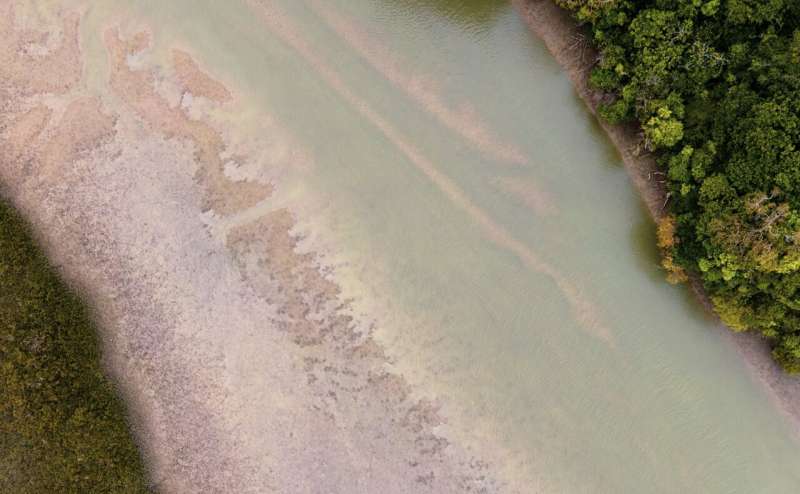This article has been reviewed according to Science X's editorial process and policies. Editors have highlighted the following attributes while ensuring the content's credibility:
fact-checked
proofread
A new framework for customized marine conservation in local contexts

Aotearoa's coastal marine ecosystems are struggling with the cumulative effects of multiple human activities and stressors that are leading to tipping points, ecological surprises, and irreversible ecosystem damage.
Each activity, the stressors it generates, and the adverse ecological effects of those stressors, leave a "footprint" on the environment, and in many marine ecosystems, overlapping footprints create complex mosaics of cumulative effects. How ecosystems respond to cumulative effects is dependent on the resilience of ecosystem components to stressors and ecological and physical context (i.e., place-based) dependencies. These collectively determine the size and depth of a footprint.
Microplastics are a growing problem world-wide and provide an example of how a stressor can impact the size of an ecosystem footprint. When microplastics wash up into our estuaries, they accumulate in the sediments altering the oxygen production of microscopic plants and nutrient processing capacities of foundation species, such as shellfish and worms. This negatively impacts the capacity of the estuarine ecosystem to process and remove excess nitrogen meaning that the ecosystem footprint has increased even though nitrogen inputs from land have not.
As a result, the ecosystem's resilience to additional nitrogen loading and other stressors declines becoming more susceptible to a tipping point. Every coastal ecosystem has a unique ecosystem response that reflects the scale and context of interrelated activities and associated stressors, such as microplastics or excess nutrients.
New research from Sustainable Seas National Science Challenge has developed an "ecosystem response footprint framework" to help communities to manage their coastal ecosystems and prioritize ecological recovery. This framework can be used to inform policy and new guidelines for marine management. The study is published in the journal Ecosystem Health and Sustainability.
"We cannot just base the way we manage marine environments on limit setting approaches because the same thing doesn't happen everywhere at the same time," says researcher Jasmine Low, based at the University of Auckland.
"For ecological recovery and resilience, we need a way of understanding all of the damage done to a particular marine ecosystem and the best management actions to take."
The framework aims to help communities and environmental managers take a more holistic (ecosystem based) approach to managing cumulative effects and make effective marine management decisions, even where detailed knowledge or data is not available. Take, for example, a community who are working to restore shellfish populations in a local estuary. The new framework can be used by everyone—regional council, community members and iwi/hapū—to make informed decisions about the next best steps to take.
This includes identifying if the estuary is a viable location for shellfish recovery, and whether that recovery can naturally happen in a time frame acceptable to the local community. Or alternatively, if shellfish stocks from elsewhere need to be brought in and cultivated to reestablish lost populations.
By knowing where and when to take different environmental management actions, communities can actively reduce the risk of future degradation to coastal marine environments.
"To try and find a solution to this big problem we have had to go back to basics and focus on how the ecosystems respond rather than just focusing on stressor loads (how much pollution we put in and how much fish we take out)," explains Jasmine.
The next steps are to integrate these concepts into marine spatial planning, policy frameworks, resource consenting, assessments of cumulative effects, and risk assessment frameworks.
More information: Jasmine M. L. Low et al, Using Ecosystem Response Footprints to Guide Environmental Management Priorities, Ecosystem Health and Sustainability (2023). DOI: 10.34133/ehs.0115
Provided by Sustainable Seas National Science Challenge


















